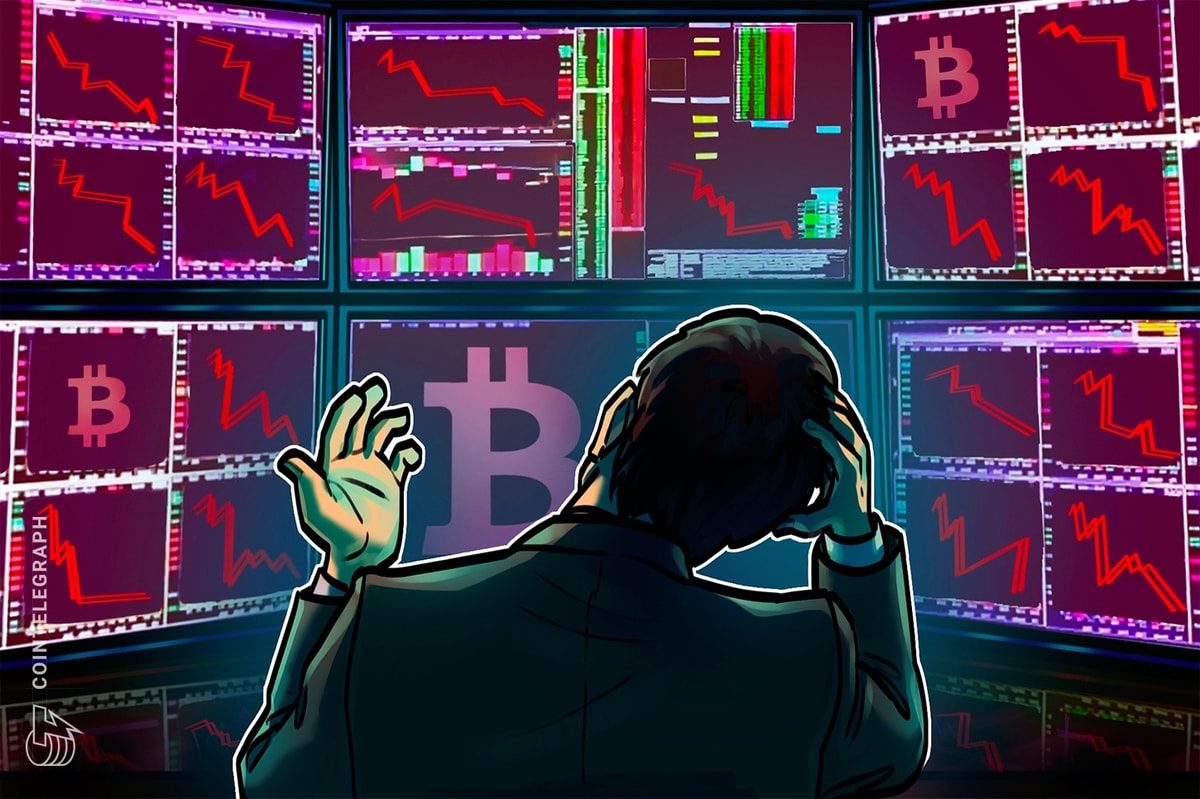The Bitcoin (BTC) price plunged 10.8% between August 25 and August 27 after briefly surpassing $65,000. The decline was linked to concerns about a U.S. recession and excessive optimism in the stock market, as Goldman Sachs’ head of asset allocation emphasized in an August 28 CNBC interview.
Bitcoin shaken by concerns that investors are being too optimistic
Bitcoin eventually recovered support at $58,500, but traders’ morale was significantly reduced as a key indicator of leveraged long positions fell to a 10-month low. The indicator turned neutral on August 28, but traders believe the bulls will need more time to regain confidence, which could lead to further price corrections.
Goldman’s Christian Mueller-Glissmann said investors should view the global market crash on August 5, triggered by the Bank of Japan’s decision, as a “warning shot.” “We are sadly back to the same problems we had a month ago,” Mueller-Glissmann added in a CNBC interview. There is over-optimism despite the fundamentally mixed macroeconomic data.
Some may argue that a 10% price swing in two days is not uncommon in Bitcoin, and recent historical data confirms that BTC volatility is increasing, making unexpected moves more frequent. However, this analysis overlooks the impact on leveraged positions in the Bitcoin futures market.
Bitcoin/USD 20-day historical volatility. Source: TradingView
According to the data, Bitcoin’s year-to-date volatility spiked to over 65% in early August, significantly higher than the 24% to 52% range it has seen over the past two months. To give context, the S&P 500 volatility peaked at 27% in mid-August, its highest level since December 2022. However, as mentioned earlier, crypto traders tend to be overly optimistic and overly reliant on leveraged positions.
To assess how Bitcoin’s drop below $60,000 has affected professional traders, we need to look at the BTC futures market.
Bitcoin Futures Premiums Plummet, Stablecoin Demand Slumps
In neutral terms, monthly contracts should trade at a premium of 5% to 10% per year to account for the longer settlement period. Any reading below this level would be interpreted as bearish, given that crypto traders tend to be naturally bullish.
Bitcoin 1-month futures annual premium. Source: Laevitas.ch
Bitcoin futures premiums briefly fell below the 5% neutral threshold on August 27, reaching their lowest level since October 2023. After a strong $58,500 support, demand for bullish bets resumed and the indicator rose to a healthy 6% level. Nevertheless, the impact was reflected in the total Bitcoin futures open interest, which has fallen 4% since August 26, to 517,430 BTC, according to Coinglass data.
Forced liquidations resulted in $102 million of leveraged Bitcoin long positions being liquidated within 48 hours, a relatively small amount considering the significant price action. In contrast, the August 5 crash resulted in $311 million of leveraged bull positions being liquidated within the same 48 hours. So while it would be incorrect to claim that the recent drop to $57,920 has significantly changed the positioning of whales and arbitrage desks, it has certainly made traders more risk-averse.
To determine if sentiment is limited to the Bitcoin futures market, we need to evaluate the broader appeal of cryptocurrencies. Stablecoins typically trade at a premium of 2% or more to the official US dollar rate, due to strong retail demand for cryptocurrencies in China. Conversely, discounts often indicate fear, as traders want to get out of the crypto market.
relevant: Bitcoin bulls weaken as crypto markets remain in ‘structurally orderly downtrend’ for 5 months
USD Tether (USDT) Peer-to-Peer Trading vs. USD/CNY. Source: OKX
The USD Tether (USDT) premium in China improved slightly between August 26 and August 28, but remained neutral, hovering close to 0%. The discount that had persisted since August 21 has disappeared, but there are no clear signs of demand picking up in China. Ultimately, Bitcoin traders seem unsurprised that support at $64,000, while not desperate at $59,000, has failed to hold.
This article is for general information purposes only and is not intended to be, and should not be taken as, legal or investment advice. The views, thoughts and opinions expressed here are solely those of the author and do not necessarily reflect or represent the views and opinions of Cointelegraph.

